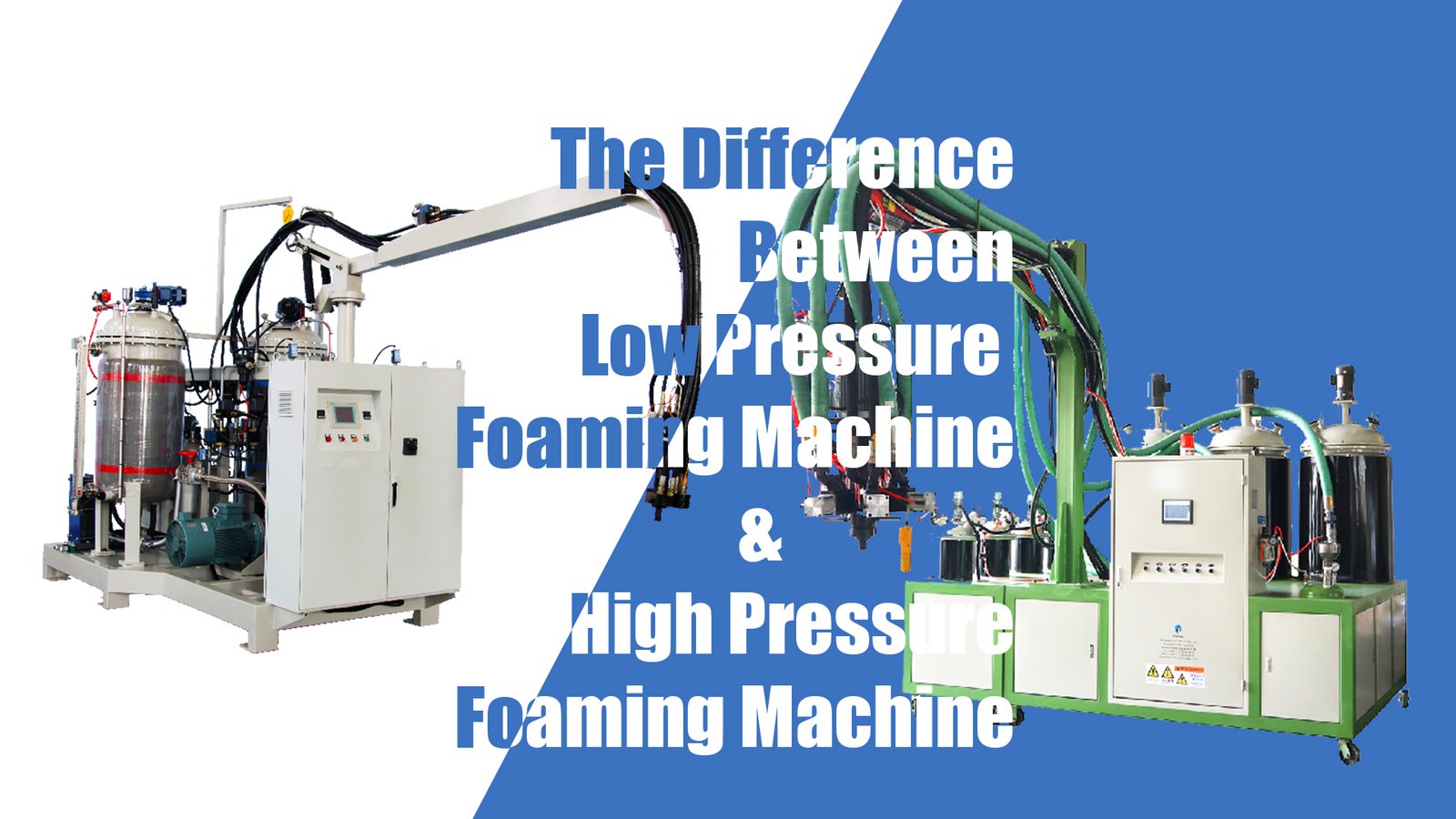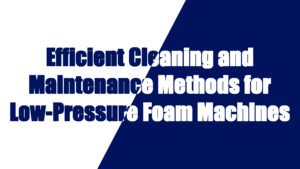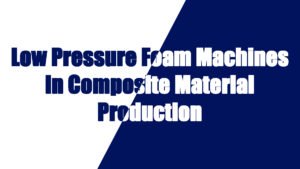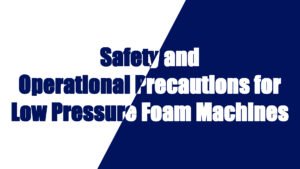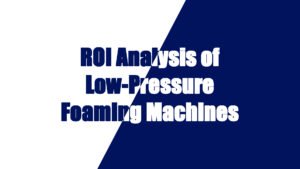High-pressure and low-pressure foaming machines are two essential types of equipment used in the production of polyurethane foam. They differ significantly in terms of structure, mixing efficiency, material compatibility, production costs, and product quality. These differences make each type suitable for different production scenarios. This article explores these differences in detail and provides guidance on selecting the most suitable machine based on specific production requirements.
I. Key Differences Between High-Pressure and Low-Pressure Foaming Machines
1. Equipment Structure and Working Principle
High-pressure foaming machines utilize high-pressure pumps to pressurize the A component (polyol) and B component (isocyanate) to 10–20 MPa. The materials are then mixed through high-velocity impingement inside the mixing head, ensuring thorough blending without the need for mechanical stirring components. This reduces equipment wear and enhances operational stability, making them ideal for large-scale production.
In contrast, low-pressure foaming machines rely on mechanical stirring blades to mix materials in the mixing chamber. Although the design is simpler and the upfront cost is lower, the stirring components are prone to wear, resulting in higher maintenance requirements and lower reliability during long-term operations. As a result, low-pressure machines are better suited for small- to medium-scale production setups.
2. Mixing Efficiency and Uniformity
High-pressure pu foaming machines achieve molecular-level mixing through high-speed impingement and turbulence, ensuring excellent uniformity and efficiency. The resulting foam features fine cell structures and superior physical properties, making this method ideal for high-end applications.
Low-pressure machines, on the other hand, rely on mechanical stirring. The mixing quality heavily depends on the speed of the blades and the design of the mixing chamber. Due to lower mixing efficiency, low-pressure machines may produce foam with uneven cell structures, making them more suitable for applications where product performance is less critical.
3. Material Compatibility
High-pressure foaming machines offer greater flexibility in material compatibility. They can process high-viscosity, fast-reacting chemical systems and accommodate additives like catalysts, blowing agents, and flame retardants, enabling the production of specialized foams such as flexible foam, rigid foam, high-resilience foam, and flame-retardant foam.
In contrast, low pressure pu foam machines are better suited for simpler chemical formulations with low viscosity and slow reaction times. They are not suitable for processing complex material systems, which limits their application scope compared to high-pressure machines.
4. Production Costs
High-pressure machines require a higher initial investment but offer long-term cost advantages due to their efficient mixing and reduced material waste. They are ideal for companies with high production volumes and long-term operational goals.
Low-pressure machines have lower upfront costs but come with higher operating expenses, including material waste and frequent replacement of stirring components. They are a cost-effective choice for businesses with limited budgets or short-term production needs.
5. Product Quality
High-pressure machines deliver superior product quality, with foam characterized by fine and uniform cell structures, consistent physical properties, and excellent surface quality. These characteristics make high-pressure machines the preferred choice for high-performance applications.
Low-pressure machines, while producing foam at a lower cost, often result in larger, uneven cells and less consistent physical properties. These machines are best suited for applications where product quality is not a critical factor.
II. Applications of High-Pressure and Low-Pressure Foaming Machines
1. Applications of High-Pressure Foaming Machines
High-pressure machines are widely used in industries requiring high-quality foam products:
- Automotive Industry: Used for producing car seats, steering wheels, and dashboards where durability, comfort, and precision are critical.
- Konstruksi Dan Isolasi: Ideal for manufacturing rigid polyurethane foam panels for insulation in buildings, cold storage, and pipelines. The foam produced ensures excellent thermal performance and energy efficiency.
- High-End Appliances: Used in producing refrigerator insulation, water heater linings, and other appliances requiring durable and stable foam with superior insulating properties.
2. Applications of Low-Pressure Foaming Machines
Low-pressure machines are primarily used for applications with less demanding performance requirements:
- Packaging: Commonly used for producing industrial packaging foam, such as protective pads for electronics and other goods. The cost-effectiveness of low-pressure machines makes them suitable for mass packaging production.
- Furniture: Used for producing foam for mattresses, cushions, and sofas in furniture manufacturing. Low-pressure machines provide a cost-effective solution for medium-quality foam products.
- Mainan: Widely used in the production of foam-filled toys and other simple products where high precision and durability are not essential.
III. How to Choose the Right Foaming Machine
1. Assessing Production Needs
The first step is to evaluate production requirements. If the target market is high-end and demands superior product performance, such as automotive seats or high-performance insulation materials, high-pressure foaming machines are the best choice. For low-end or large-scale production of simple products, low-pressure machines may suffice.
2. Budget Analysis
High-pressure machines are more suitable for businesses with sufficient capital and long-term operational plans. On the other hand, low-pressure machines are more cost-effective for small businesses or those with budget constraints.
3. Application-Specific Considerations
Each industry has unique requirements. High-pressure machines excel in sectors like automotive, construction, and high-end appliances, where quality and performance are paramount. Low-pressure machines are better suited for packaging, furniture, and low-end consumer goods.
By understanding the key differences between high-pressure and low-pressure foaming machines, businesses can make informed decisions based on their specific production needs, budget, and application scenarios. Whether aiming for high-end precision or cost-effective manufacturing, selecting the right equipment is crucial to achieving operational efficiency and product excellence. As technology continues to advance, both types of machines will evolve to meet the diverse needs of the polyurethane foam industry.


















